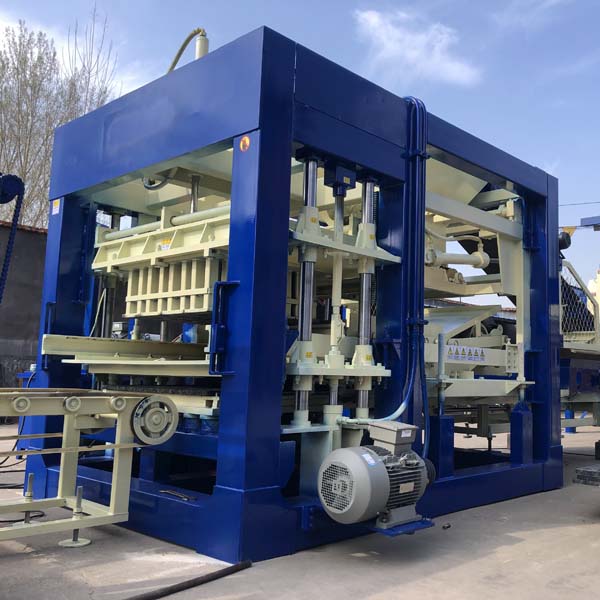
In the dynamic landscape of modern construction, technology plays a pivotal role in shaping the way we build our world.
One such technological marvel that has been making waves in the construction industry is the advanced automatic block machine.
This revolutionary technology is transforming traditional block production processes, offering unparalleled efficiency, precision, and sustainability.
In this essay, we delve into the profound impact of advanced automatic block machine technology on construction production, its key benefits, potential challenges, and the future it holds.
The Evolution of Construction Technology and the Rise of Automatic Block Machines
The construction industry has witnessed remarkable advancements over the years, driven by innovation and the quest for increased efficiency.
Traditional block-making methods, while effective, were often labor-intensive and time-consuming.
The advent of automatic block machines marked a significant turning point, streamlining the entire production process.
These machines combine cutting-edge engineering with automation, enabling precise block formation through a series of automated steps.
From raw material input to block molding, curing, and stacking, every stage is seamlessly integrated, drastically reducing human intervention and potential errors.
Key Benefits of Advanced Automatic Block Machine Technology
Enhanced Efficiency and Productivity: One of the foremost advantages of automatic block machines is their ability to exponentially increase production efficiency.
Unlike manual methods, these machines can work tirelessly, 24/7, without compromising on quality.
This translates to higher output, shorter project timelines, and ultimately reduced costs.
Consistency and Precision: Automation ensures uniformity in block size, shape, and strength, leading to higher structural integrity in buildings.
This level of precision is challenging to achieve consistently through manual labor alone, mitigating potential construction flaws and bolstering overall safety.
Resource Optimization and Sustainability: Automatic block machines optimize the usage of raw materials, minimizing waste and contributing to a more sustainable construction process.
Additionally, some machines are designed to incorporate recycled materials into block production, aligning with environmentally friendly practices.
Skilled Labor Augmentation: While automation reduces the need for extensive manual labor, it also shifts the focus from repetitive tasks to supervisory roles that demand higher skill sets.
This promotes the development of a more skilled workforce, aligned with the industry’s changing demands.
novation in Block DesignI: Advanced automatic block machines have the potential to create intricate block designs that were previously challenging to achieve manually.
This opens up creative possibilities for architects and designers, resulting in visually appealing structures.
Challenges and Considerations in Implementing Automatic Block Machine Technology
Initial Investment: The acquisition and installation of advanced automatic block machines entail a substantial upfront cost, which can be a deterrent for smaller construction businesses or those with limited financial resources.
Maintenance and Technical Expertise: These machines require regular maintenance and technical expertise to ensure their optimal functioning.
Businesses must invest in training their workforce or hiring skilled technicians to address any operational issues promptly.
Adaptation and Workforce Transition: The introduction of automation may necessitate a shift in the roles and responsibilities of the existing workforce.
Proper training and support are crucial to ensure a smooth transition and to mitigate potential resistance to change.
Market Acceptance and Education: As with any revolutionary technology, gaining market acceptance and educating stakeholders about the benefits and potential of automatic block machines is essential. Collaboration between manufacturers, industry associations, and construction professionals is vital to foster a positive perception.
The Future of Automatic Block Machine Technology and Construction
The trajectory of automatic block machine technology points toward a future where construction processes are further optimized for efficiency, sustainability, and innovation.
As research and development continue, we can anticipate:
Smart Integration: Integration with Internet of Things (IoT) technology will enable real-time monitoring, predictive maintenance, and data-driven insights, enhancing the overall performance and longevity of automatic block machines.
Customization and Flexibility: Future machines might offer the capability to create custom block designs on-demand, catering to unique architectural requirements and design visions.
Automation Synergy: Collaboration between various automated construction technologies, such as robotic assembly, 3D printing, and automatic block machines, could lead to fully automated construction sites, drastically reducing the need for extensive manual labor.
Automatic block machines have the potential to transform construction practices worldwide, particularly in regions with burgeoning infrastructure needs.
Their efficient and sustainable nature could contribute to more rapid and environmentally responsible urban development.
In conclusion, the advent of advanced automatic block machine technology has indeed revolutionized construction production.
Through increased efficiency, precision, sustainability, and innovation, these machines are poised to reshape the industry’s landscape.
While challenges such as initial investment and workforce transition must be navigated, the potential benefits far outweigh these hurdles.
As we gaze into the future, it is clear that automatic block machines will continue to evolve, empowering the construction industry to build a more efficient, sustainable, and vibrant world.
